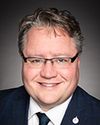Thanks for the question, Mr. Hardie.
First of all, I'm not a biologist. I want to preface by saying that my comments on hatcheries are from what I've gained from reading research from the department and other sources.
You've raised the issue of diversity and weakening the biodiversity in the stock. The ability for those salmon to fend off disease and other impacts makes them competitive in the environment. From what I understand and what I've read, the industrial hatchery model used in the United States has mainly not proven to be successful, and it has proven to be extremely expensive when you measure investment per fish.
Mr. Snyder and others have mentioned—and obviously he can speak more to this—looking at specific hatcheries, community-based hatcheries, because many of these hatcheries in British Columbia, where we've chosen a very different model, are education centres, community support centres. They're places for the salmonid enhancement program, SEP, to operate and to work with communities and classrooms. They're excellent areas in which you can build infrastructure in communities, not just for salmon but for people as well in communities. I think the government should consider that type of facility and consider the impact and the effects it would have.
Again, that is to try to get salmon off of life support—or steelhead. That's what I think we need to do, and then concentrate on bold investments in habitat and some of the root causes in our watersheds, which are the homes that these salmon live in, including the ocean.
Those are the areas I think the government should be focused on. Again, I reiterate: conserve, protect and restore. We need to focus on protecting salmon habitat, restoring where it's been impacted, and then we need a conservation ethic throughout British Columbia and the west coast—indeed, throughout Canada and the world—to have the transition that we're talking about, toward a resilient watershed, a resilient way of life.





